Unlocking Kanji Lessons
By reviewing your radicals and proving you really do know them (despite how much time has gone by between Reviews), kanji will begin to unlock and show up in your Lessons. More information can be found about leveling up on our How Do I Level Up? page.
All kanji in WaniKani are based off of radicals you learned and reviewed. Some kanji are made up of a single radical, so the radical and kanji will be the same. Other kanji will be made up of three or four radicals. In the case of Level 1, you’ll see a lot of kanji that consist of a single radical which makes them quite easy to learn. You’ll need to advance to Levels 2 or 3 to really see how effective the radical mnemonic method is.
Kanji Lessons
Kanji Lessons are similar to the Radical Lessons you did earlier, though they are a bit more complicated and have more steps.
Radicals:
The first tab of a kanji Lesson will be “Radicals.” This shows you which radicals make up the kanji you’re about to learn.
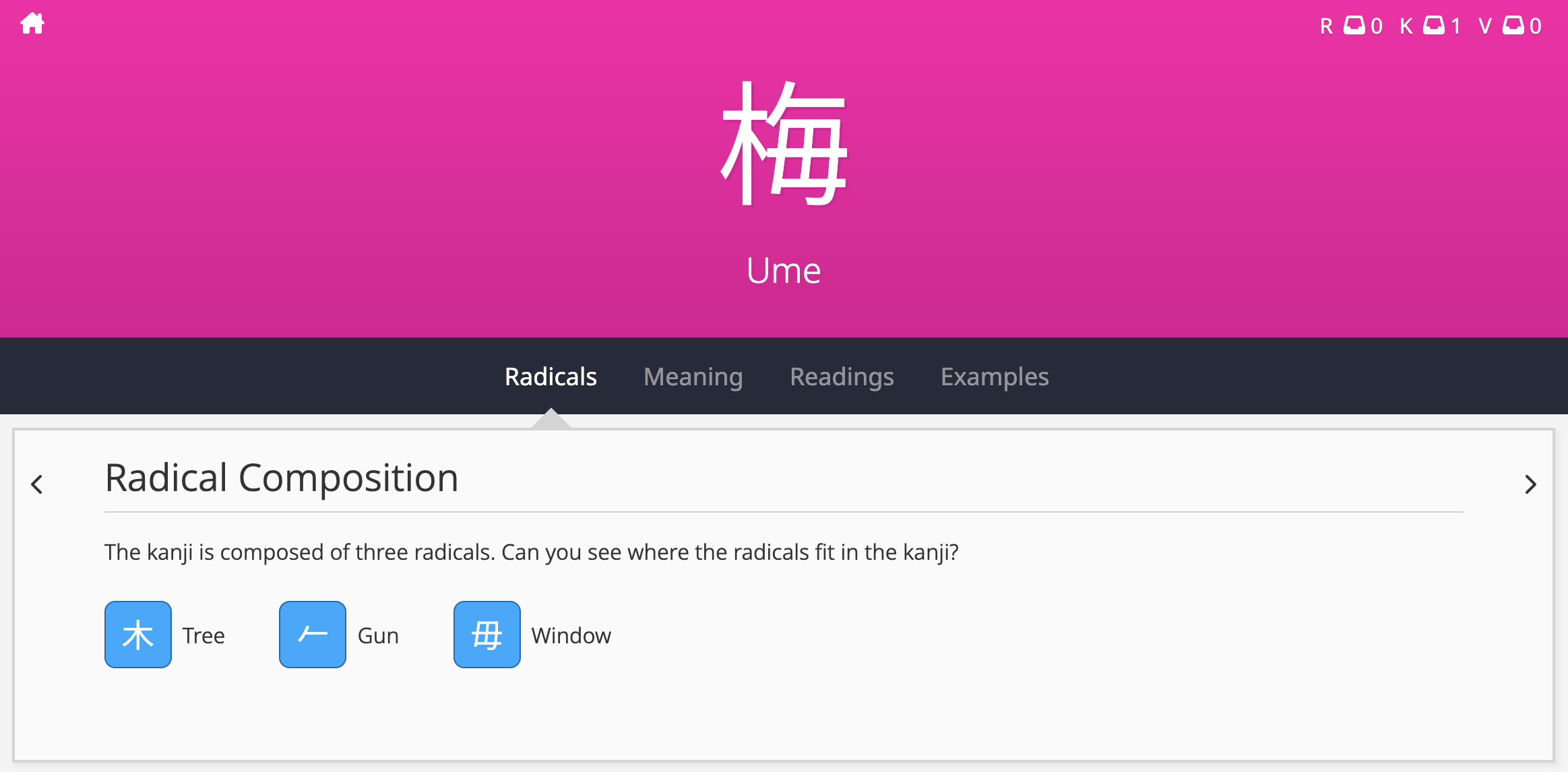
Can you see where each of these radicals fit into the kanji?
Meaning:
The second tab is “Meaning.” It will show you the accepted meaning(s) of a kanji along with a mnemonic.
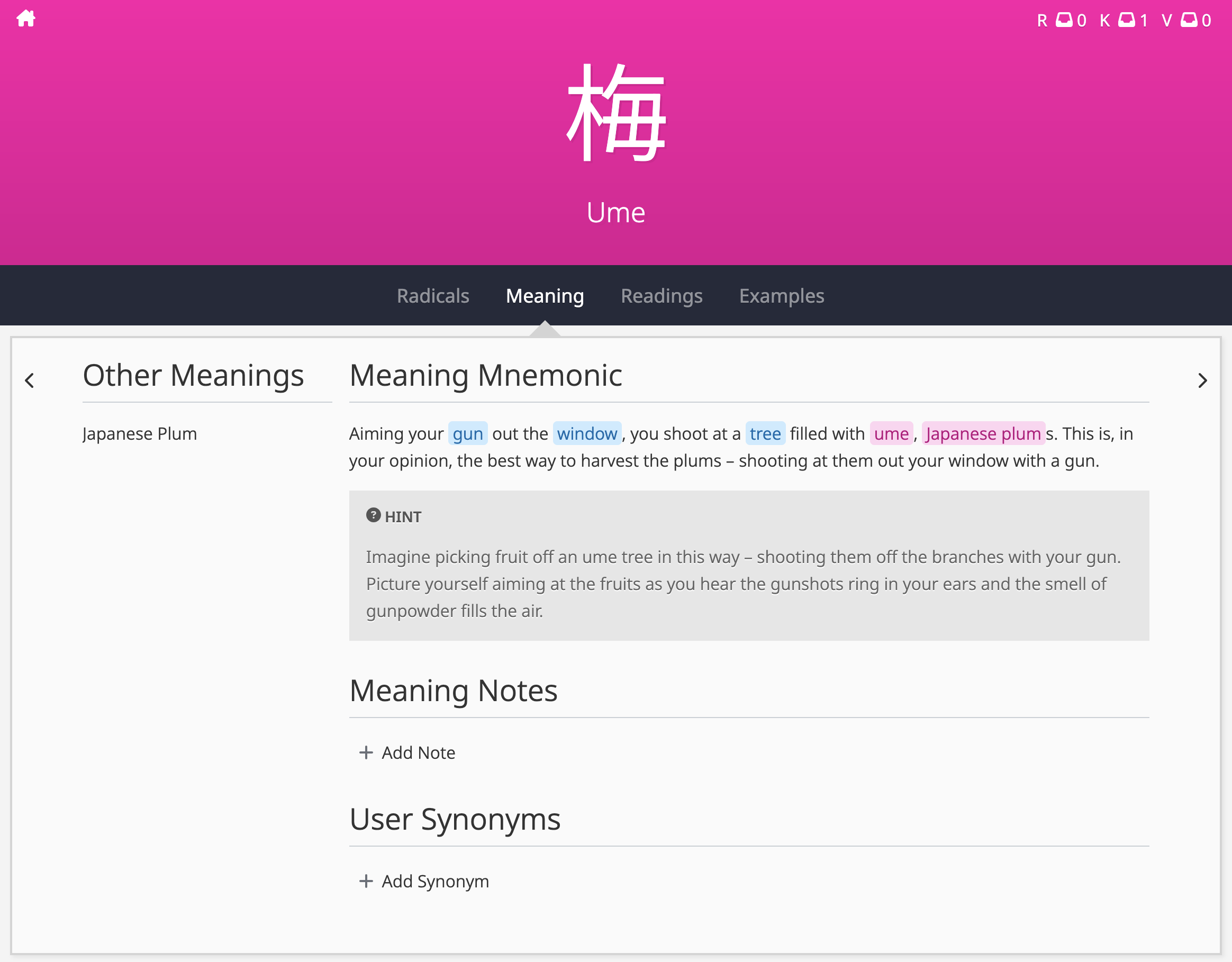
In the “Meaning Mnemonic” section will be a mnemonic. This mnemonic is based off the radicals that make up this kanji. Read the mnemonic carefully, and attempt to imagine it vividly as it will help you to remember it for a longer period of time.
The “hint” is there to give you tips on better ways to utilize the mnemonic above. If you’d like, add some notes for yourself (a new mnemonic, or something else) to help you to remember it.
Readings:
The third tab of a kanji Lesson is “Readings.” Now you will learn the reading of the kanji, i.e. how to read it in Japanese. Because kanji can have multiple readings, WaniKani narrows down the reading you learn to (generally) one reading. We refer to this as “the reading.” For now, all you need to do is memorize this reading. You’ll learn the rest through vocabulary, which unlocks later on.
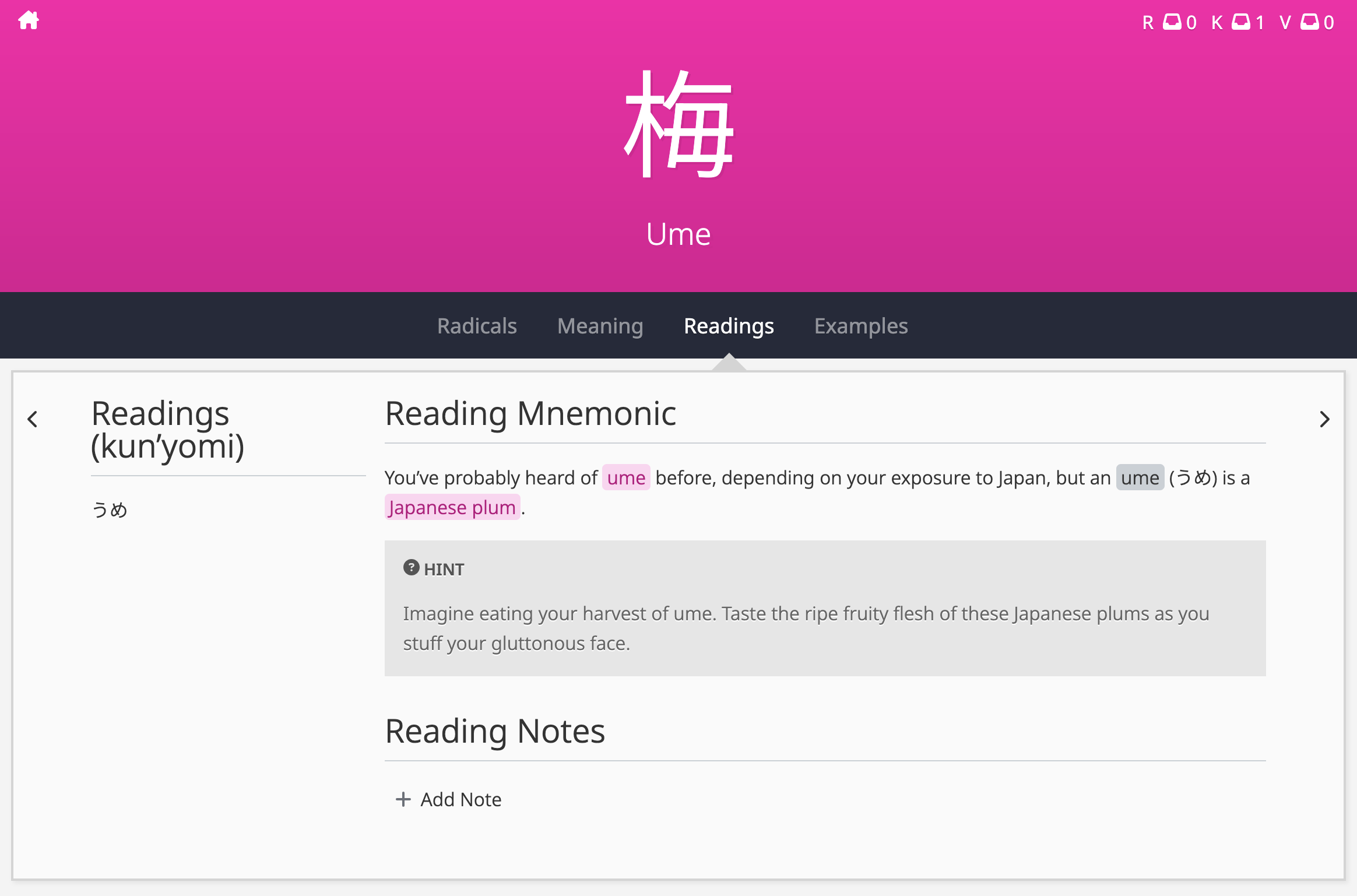
Use the “Reading Mnemonic” section to learn the reading. Generally, this mnemonic will be a continuation of the Meaning Mnemonic. The combination of radicals triggers the memory of the story which helps you to recall both the meaning and the reading of a kanji. As with the meaning mnemonic, it’s important you really imagine the mnemonic happening. Add additional senses, like touch or smell if it helps.
If you want to add any notes (another mnemonic or something else) you can add it in the “Reading Notes” section.
Examples:
The final tab in your kanji Lesson is “Examples.”
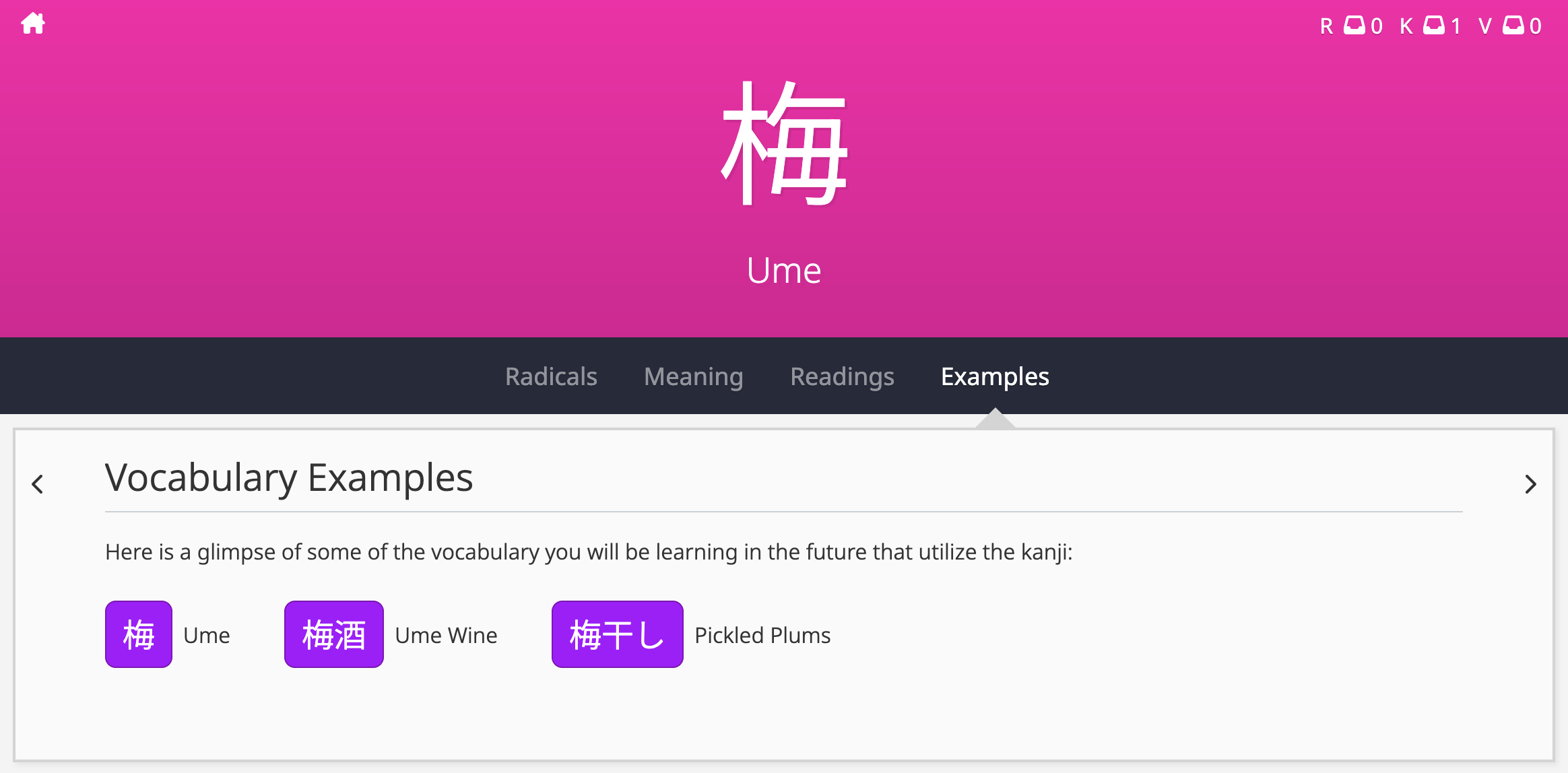
Here you’ll be able to see some vocabulary words that use the kanji you’ve just learned. There’s no need to memorize these vocabulary words right now. Through enough reviews of the kanji, you’ll unlock these vocabulary into your Lessons when you’re ready to learn them.
The Kanji Lesson Quiz
After finishing your Lesson set, you’ll be taken to the Lesson Quiz screen. Just like with radicals, you’ll need to complete the quiz for these items to get moved to your Review queue.
Kanji are a little different from radicals in one way, though. They have a meaning and reading that both must be answered. You’ll need to answer both correctly to complete the kanji “set.”
The first side is “meaning,” which is the English meaning of the kanji you learned.
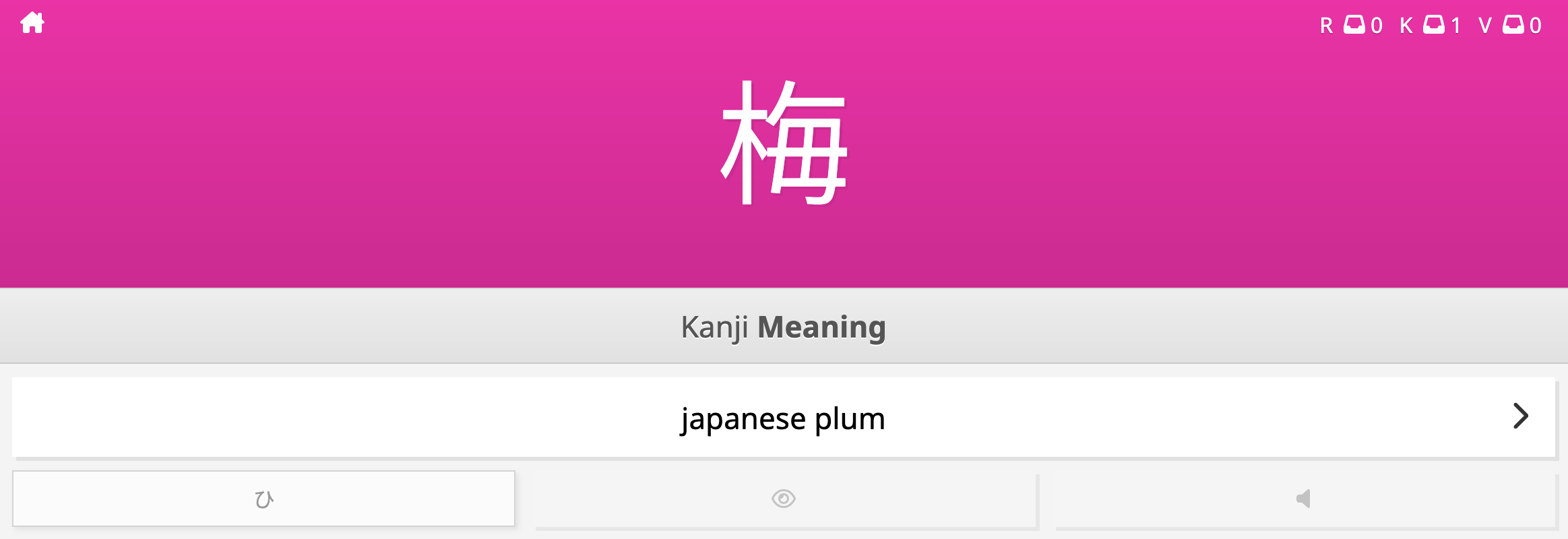
The other side is the “reading,” which is the Japanese reading, i.e. how you read it in Japanese.

Reading reviews will automatically convert your text to Japanese. For more, see our How to type in Japanese series. You’ll also want to pay special attention to another common beginner problem, which is differentiating the meanings and readings of kanji as you’re doing the quiz.
Doing Your Kanji Reviews
When you complete your Lesson Quiz, these items will be added to your Reviews pile. Just like radicals before, you’ll need to do more Reviews to unlock the next step. Getting 90% of your Level 1 kanji to “Guru” status will unlock Level 2. Getting any kanji to “Guru” status will also unlock vocabulary based off that kanji (and any other combination of kanji that are also at “Guru”).
To put it simply, do your Reviews when they are available until new Lessons appear. If you do, you’ll continue to make progress.
Onboarding — Series
This series guides you through getting started on the WaniKani platform.